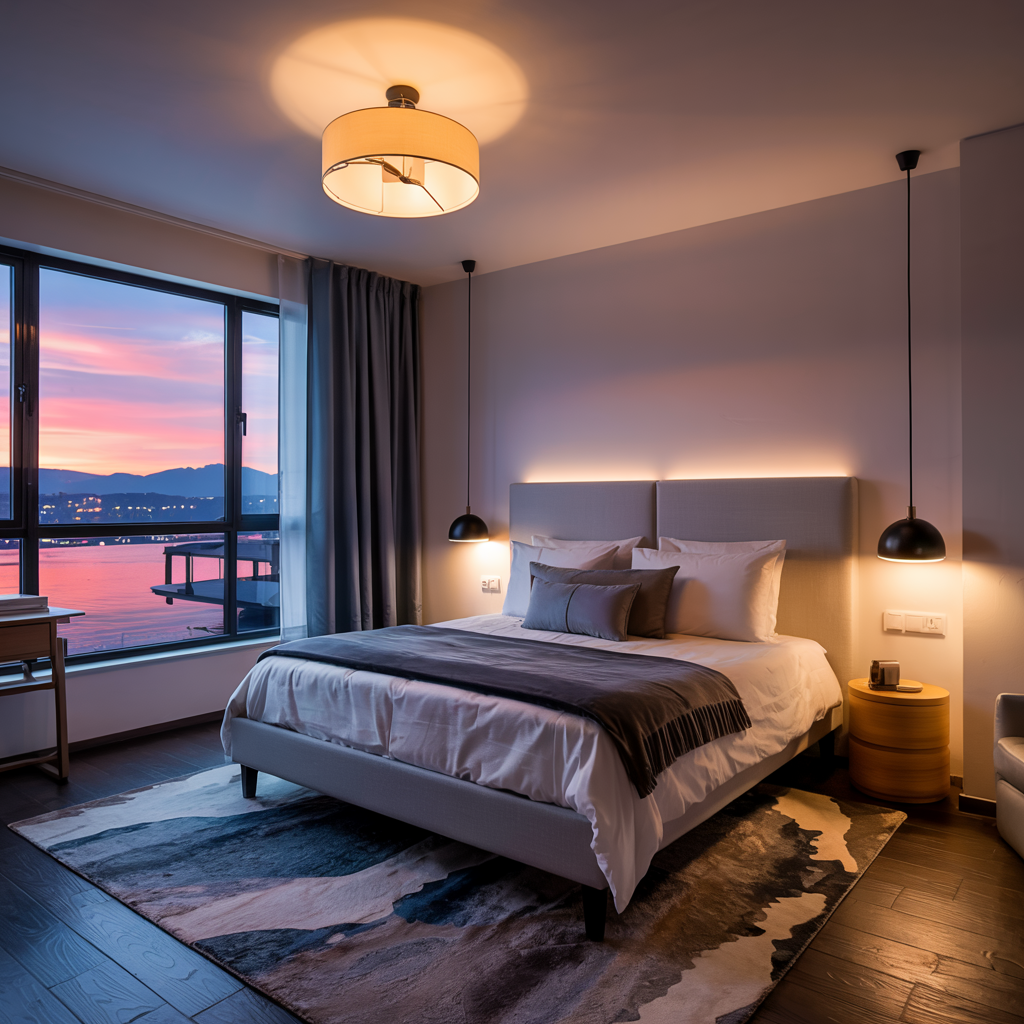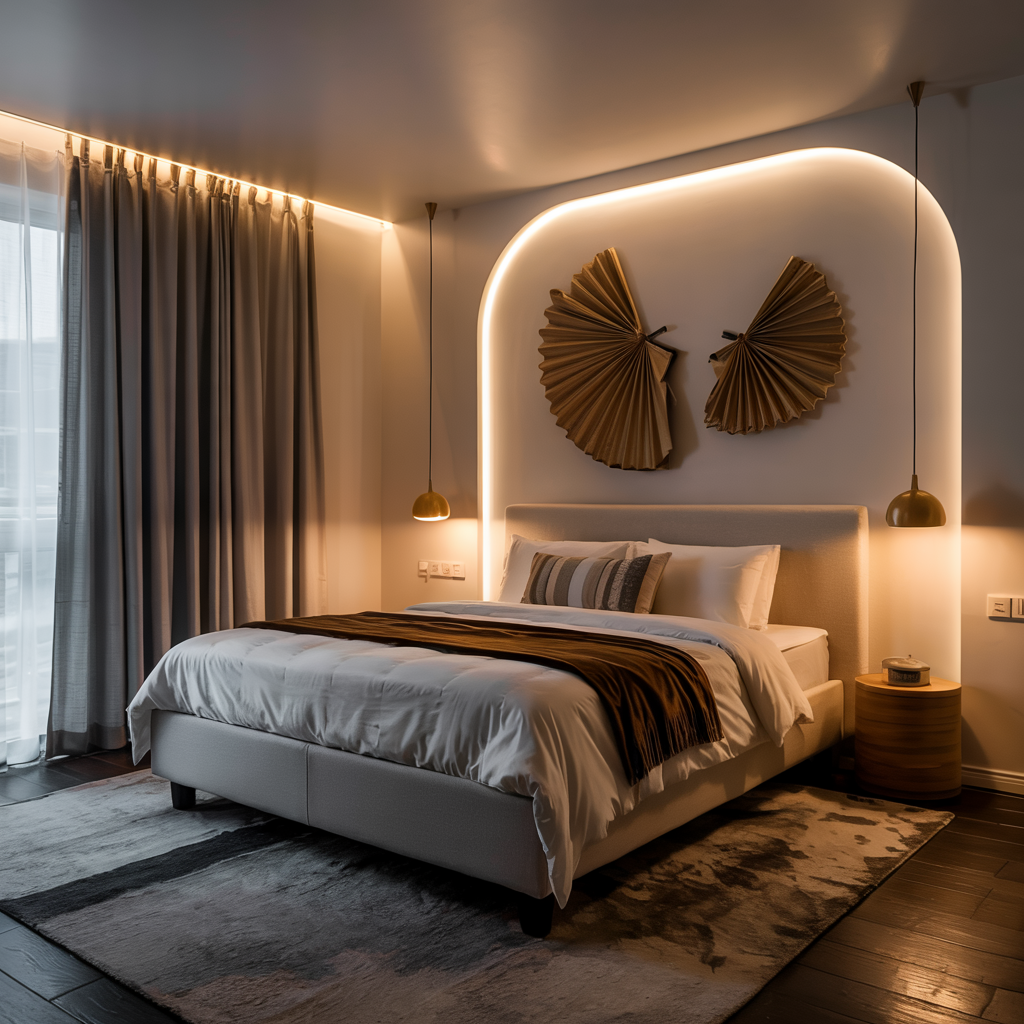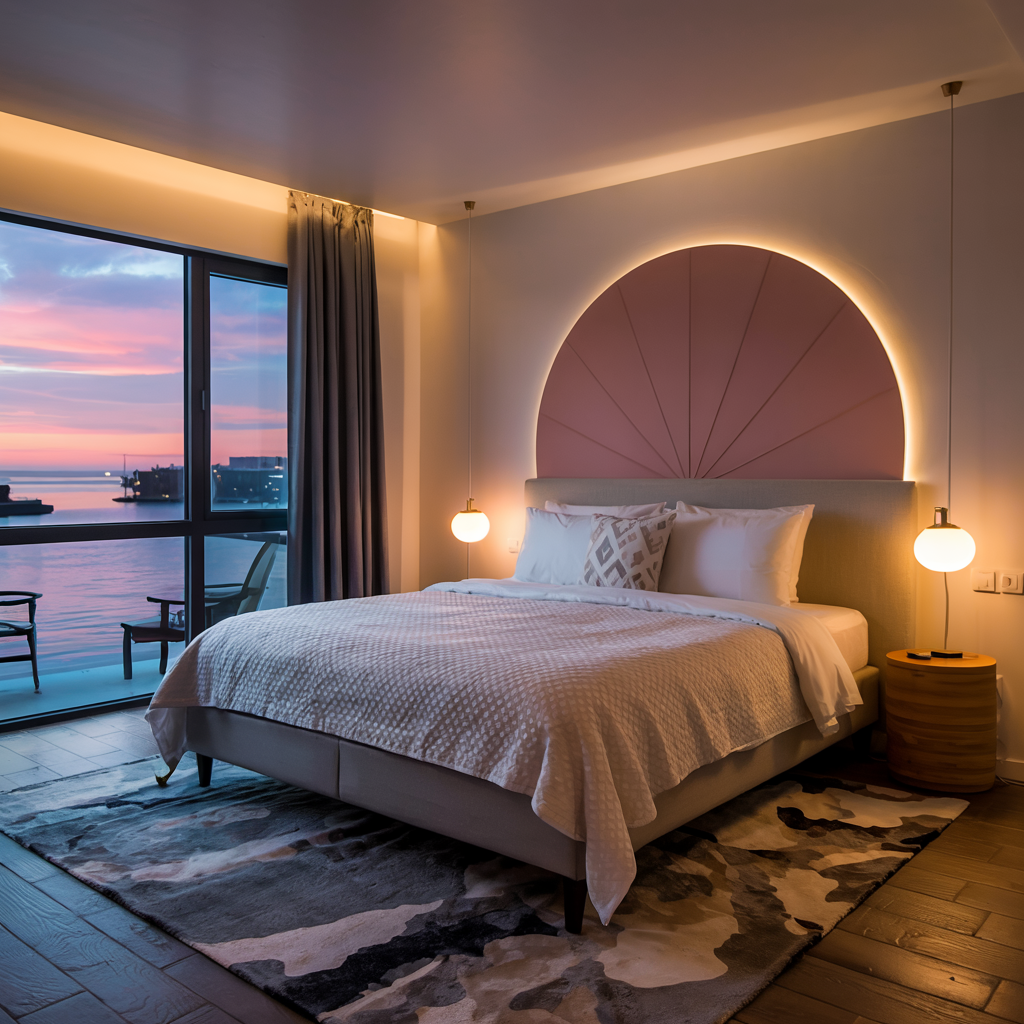Illuminating Your Space: How Much Lighting for a Room Do You Need?
Are you struggling to find the perfect lighting for your home? Does your living room feel drab, your kitchen too dim, or your bedroom overly bright? Understanding how much lighting for a room is crucial for creating a comfortable, functional, and aesthetically pleasing environment. This comprehensive guide will walk you through determining the ideal lighting…
Are you struggling to find the perfect lighting for your home? Does your living room feel drab, your kitchen too dim, or your bedroom overly bright? Understanding how much lighting for a room is crucial for creating a comfortable, functional, and aesthetically pleasing environment. This comprehensive guide will walk you through determining the ideal lighting for any space, covering everything from calculating lumens to choosing the right types of fixtures and understanding ambient, task, and accent lighting. We’ll explore different lighting styles, energy efficiency considerations, and even answer frequently asked questions to help you light your home perfectly.
The amount of light a bulb emits is measured in lumens. Higher lumens mean brighter light. A typical 60-watt incandescent bulb produces around 800 lumens. LEDs are much more energy-efficient, often
achieving the same brightness with far fewer watts. Understanding lumens is crucial for choosing the right bulb for your room’s size and purpose.
How Much Lighting For A Room?
A room needs 20 lumens per square foot for general lighting. Multiply the room’s square footage by 20 to get the total lumens required. For example, a 200-square-foot room needs about 4,000 lumens. Adjust based on room function—kitchens and workspaces may need up to 50 lumens per square foot.
The Importance of Proper Lighting

Proper lighting affects more than just visibility. It impacts mood, productivity, and even sleep quality. Dim, insufficient lighting can lead to eye strain, headaches, and fatigue. Conversely, overly bright lighting can be harsh and uncomfortable. Finding the right balance is key to a comfortable and functional space.
Types of Lighting: Ambient, Task, and Accent
There are three main types of lighting: ambient, task, and accent. Ambient lighting provides overall illumination, like a ceiling fixture. Task lighting focuses light on a specific area, such as a desk lamp for reading. Accent lighting highlights features, such as picture lights or track lighting.
Read More: How Many Can Lights for a 12×16 Room: Determining The Right Number Of Recessed Lights
Calculating Lighting Needs for Different Rooms
Here’s a simple table for calculating lighting needs (in lumens) based on different room types and functions. Multiply the square footage of your room by the recommended lumens per square foot to get the total needed.
| Room Type | Recommended Lumens per sq. ft. | Example (200 sq. ft. room) |
|---|---|---|
| Living Room | 10–20 lumens | 2,000–4,000 lumens |
| Bedroom | 10–20 lumens | 2,000–4,000 lumens |
| Kitchen (General) | 30–40 lumens | 6,000–8,000 lumens |
| Kitchen (Task Areas) | 50–75 lumens | 10,000–15,000 lumens |
| Bathroom | 70–80 lumens | 14,000–16,000 lumens |
| Dining Room | 30–40 lumens | 6,000–8,000 lumens |
| Home Office | 50–60 lumens | 10,000–12,000 lumens |
| Hallways/Stairs | 5–10 lumens | 1,000–2,000 lumens |
Living Room Lighting Requirements
Living rooms generally require a balance of ambient, task, and accent lighting. A central ceiling fixture provides ambient light. Floor lamps and table lamps offer task and accent lighting, creating cozy reading nooks or highlighting artwork.
Bedroom Lighting Design

Bedrooms benefit from softer, warmer lighting. A dimmer switch on a ceiling fixture allows for adjusting brightness. Bedside lamps provide task lighting for reading. Consider using low-wattage nightlights for nighttime navigation.
Kitchen Illumination Strategies
Kitchens need bright, task-oriented lighting for food preparation. Under-cabinet lighting, pendant lights above islands, and recessed lighting are all excellent choices. Ambient lighting should complement this task lighting, creating a welcoming atmosphere.
Bathroom Lighting Considerations
Bathrooms require bright, even lighting for grooming and safety. Vanity lights are essential for applying makeup and shaving. Recessed lighting provides general illumination. Consider a waterproof dimmer switch for mood setting.
Read More: 15 Sloped Ceiling Lighting Ideas: Brighten Your Unique Spaces Beautifully
Factors Affecting Room Lighting

Room Size and Ceiling Height
Larger rooms require more light than smaller rooms. High ceilings often need multiple light sources to evenly distribute light. The number and type of fixtures should be chosen to match the size and shape of the room.
Wall Color and Finishes
Darker walls absorb more light, requiring more lumens to achieve the same brightness. Reflective surfaces like white walls and ceilings help distribute light more effectively. Consider this when calculating your lighting needs.
Window Placement and Natural Light
Natural light significantly impacts your lighting needs. Rooms with large windows may require less artificial lighting. Position your artificial lighting to complement natural light and avoid harsh shadows.
Read More: Circular Light Fixtures: A Complete Guide For You & Ideas
Choosing the Right Lighting Fixtures
Types of Light Bulbs and Their Energy Efficiency
Incandescent bulbs are inefficient and produce heat. Fluorescent bulbs are more energy-efficient but can have a harsh light. LEDs are the most energy-efficient and long-lasting option, offering a wide range of color temperatures.
Different Lighting Fixture Styles and Their Applications
Pendant lights, chandeliers, recessed lighting, track lighting, wall sconces, and floor lamps are all options. Choosing the right fixture depends on your room’s style, size, and the type of lighting you need (ambient, task, or accent).
Lighting Layering Techniques
Layering Light for Optimal Results
Layering light combines different types of lighting for a balanced and versatile lighting scheme. It allows for adjusting the ambiance to suit different moods and activities.
Creating Ambiance with Lighting
Dimmable lights and warm color temperatures create a cozy, inviting atmosphere. Brighter lighting and cooler color temperatures are ideal for tasks requiring concentration, like working or studying.
Energy Efficiency and Cost Savings
Calculating Energy Consumption of Lighting
The energy consumption of lighting is measured in watts. LEDs generally use significantly fewer watts than incandescent or fluorescent bulbs, resulting in lower energy bills.
Smart Lighting and Automation
Smart lighting allows for automated control of your lights, such as scheduling lights to turn on and off, adjusting brightness, and changing color temperature. This provides energy savings and convenience.
Frequently Asked Questions
What is the best way to calculate the lumens needed for a room?
There are online calculators that can help, but a general guideline is to aim for 1.5-2 lumens per square foot for general lighting. More may be needed for task-oriented areas.
What color temperature is best for different rooms?
Warm white (2700-3000K) is ideal for bedrooms and living rooms, creating a relaxing atmosphere. Cool white (5000-6500K) is better suited for kitchens and bathrooms, providing bright, efficient illumination.
How can I improve the lighting in a dark room?
Use lighter wall colors, add more light sources, and choose brighter bulbs (higher lumens). Consider using reflective surfaces to bounce light around the room.
What are the benefits of using dimmers?
Dimmers allow for adjusting the brightness of your lights, creating different ambiances. They can also extend the lifespan of your bulbs and save energy.
How can I choose the right type of lighting fixture?
Consider your room’s style, size, and the type of lighting you need. Research different fixture types and compare styles to find what best suits your needs and decor.
Final Thoughts
Determining how much lighting for a room is a multifaceted process, requiring careful consideration of room size, purpose, and personal preference. By understanding lumens, color temperature, and the different types of lighting, you can create a well-lit space that enhances both functionality and ambiance. Remember to consider the interplay of natural and artificial light, energy efficiency, and the overall aesthetic of your home. Experiment with different lighting techniques and fixture styles to discover the perfect illumination for every room. Invest in high-quality, energy-efficient bulbs and fixtures to save money and enjoy long-lasting performance. Create a space that feels welcoming, productive, and perfectly illuminated!

